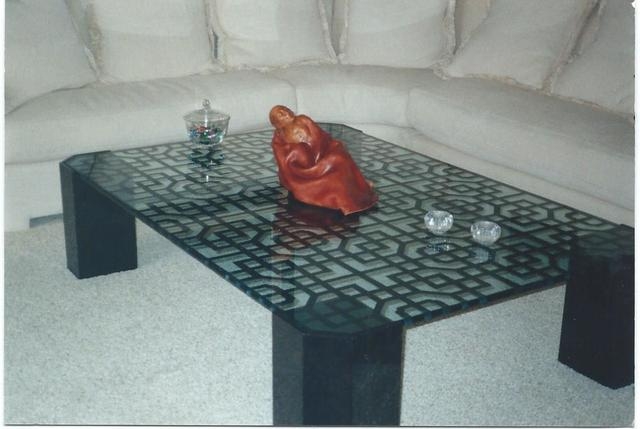Glass thickness important detail when designing tabletops
Design is collaborative by nature. Clients confer with a designer and designers will in turn consult with their subs and any number of talented artisans during the course of a project.
The give and take of ideas and the measure of expertise that each brings to the table results in a brilliant, or less-than-stellar, outcome. As a client once wisely told me, “The people you hire and work with should make you look good.”
Thus, you can only imagine my delight each time I’ve had the opportunity to work with the brilliant local glass artist Leslie Rankin. Together we’ve collaborated on a number of projects, but I was especially intrigued when Rankin approached me with a commission to design a contemporary extension dining table that would have to support three pieces of ¾-inch-thick infused glass with a reflective backing.
From the get-go I realized that this wouldn’t be just any old extension table. It would have to measure up not only to the beauty of Rankin’s glass creations, which included a three-story glass waterfall, but also to the extraordinary dynamism of the home’s architecture.
Coupled with the client’s desire to be able to move the weighty extensions by herself across the stone floor (and she being slight of build and not more than 5 feet tall), I knew this would be an exciting engineering challenge. And again I paused to think about how glass art has evolved and changed from the early days of the “clear tops.”
Glass is all around us — it’s in every window of the world. And people are drawn to glass and its beauty. Even clear glass tops have retained their popularity largely because of their ability to “open up” a limited space seeming to help make a small room look bigger while at the same time perhaps exposing an interesting table base or a beautiful rug.
Nevertheless, there is a downside to its durability, given that clear glass tends to show any little scratch, fingerprint and smudge.
Then, there’s the issue of thickness. Walk through any retail or designer-type shop and seldom if ever will you spot a glass thicker than ½ inch. It’s my belief that ¾-inch glass is the better way to go as it conveys a richer and a stronger design statement; though, of course, the thicker the glass, the more expensive it will be.
Beyond that, as a designer, it’s also a question of scale and balance. How is it possible to place a thin piece of glass on a weighty pedestal and expect to achieve a great look? You can’t. But, use a ¾-inch-thick (or if you can, even a 1-inch-thick) glass and watch the magic happen. Add a 1-inch bevel for a more traditional look, or, for a more contemporary feel, leave off the bevel and go for a flat, polished edge.
Rankin carved and colored the glass tops in our extension table with the glass art trade secret color process that she has coined “Glassic Art.” And it certainly is that.
Early on, she realized that the properties of paint and glass make it almost impossible to fuse the two and provide lasting durability and beauty let alone endure our harsh desert conditions. She experimented for years until she mastered a formula that worked. With it, she creates everything from “richly colored free-form vases and bowls to wall art that evokes a dreamy ebb and flow of the ocean, to (as I mentioned earlier), dramatic multistoried waterfalls that shimmer in a near-silent backdrop.”
The marketplace brims with a whole new world of glass tops that has exploded into the design consciousness, leaving the isolated, rarefied world of artistic glass workshops behind. Your mother’s clear glass table has been replaced with real art that is as beautiful as it is functional and is available through designers, architects, design showrooms and retailers.
The designs that can be etched or carved into glass are really limited only by the imagination. Anything from a Greek key to latticework and way beyond into the newer realm of Rankin’s infused color are available to one and all.
I recently worked with a client on a glass-top coffee table (¾ inch, of course) supported by four pedestal legs. The client decided on an intricate Asian design carved into the underside of the glass that was then painted in a faux- tortoise design as were the supports, resulting in the most exquisite of tables.
This newest evolution in glass can be found on counter, bar and sink tops and wherever else the most creative and dramatic (as well as practical) look is desired. In many applications, art glass can be used to enhance even the simplest of pedestal bases as the point of interest is, without a doubt, on the glass top and not its support.
Conversely, the more creative and important the base, the glass of choice should probably be a clear one — just as long as it’s at least ¾-inch thick.
Stephen Leon is a licensed interior designer and president of Soleil Design; he has been designing and manufacturing custom furniture and cabinetry for more than 25 years. He is past president of the Central California/Nevada Chapter of the American Society of Interior Designers (World Market Center, Suite A3304) and is a certified professional in green residential design. Questions can be sent to soleildesign@cox.net.

















